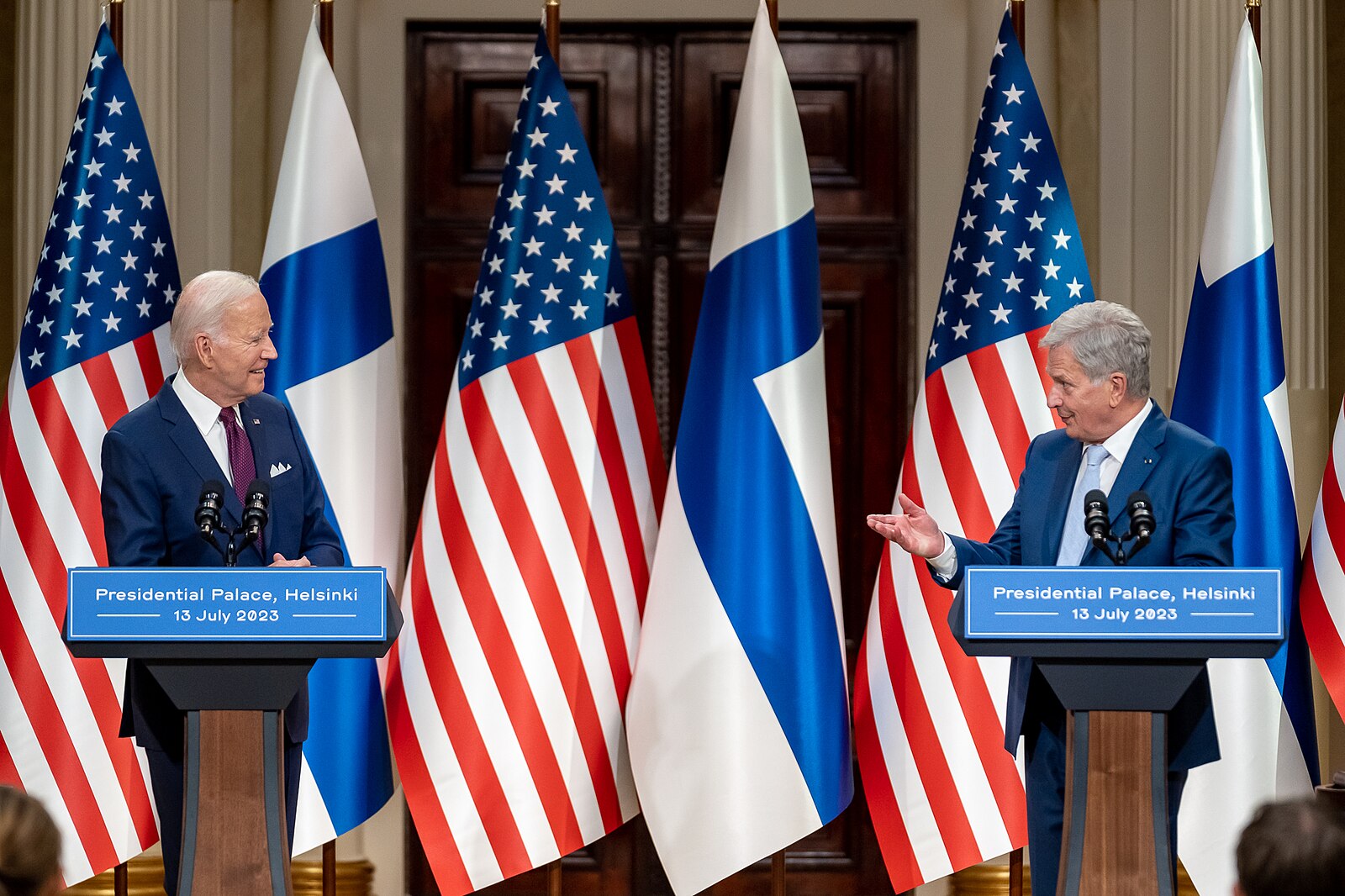Finnish warnings challenge Western action, and inaction, in Ukraine.

American President Biden and Finnish President Niimisto holding a press conference in Helsinki, Finland in July 2023.
Jacob Sagers – The war in Ukraine rages on as the world settles into something near complacency. Despite shifting focus for news reports, Finnish President Sauli Niinisto has issued a warning about Russia for Europe, and the West, during an interview last week as he nears the end of his term. Speaking about complacency and steps Finland has taken to counter Russia, he called Russia’s actions a “wake up-call” for NATO. His remarks would have been unfathomable a decade ago; now they signify a drastic shift in Finnish foreign policy. Once known for neutrality, also called Finlandization or the Paasikivi doctrine, Finland has rapidly changed its geopolitical codes.
The way a country positions itself on the global stage through actions and justifications is called their geopolitical code. Geopolitical codes include actions such as identifying allies and enemies, and then justifying these actions to its citizens as they interact with the world. After World War 2, Finland did not take part in the Marshall Plan, nor joined the Warsaw Pact, favoring an uneasy neutrality. This stance was crafted in the best interest for their country but also drew Western criticism However, Finland’s historical legacy left it in a tough position as it was subjugated by Russia for centuries and fought three wars against them in the 20th century. Russia’s recent actions in Ukraine also ultimately led Finland to join NATO, an unprecedented action that radically changed nearly a century of geopolitical codes.
Finland’s positioning in the Baltic region is also a factor that has influenced its actions. Its border with Russia and positioning along the Baltic Sea has resulted in Russia generally being labeled as an enemy. President Niinisto and the Finnish government has capitalized on all these factors to create a new geopolitical code. Namely, Finland has already expanded its military since the Fall of the Soviet Union, unlike many other European states, which grants it power against security threats and allows Finland agency. It has also justified joining NATO to the public by using Russia’s actions in Ukraine, and its geographic location, as a foreshadowing threat for what’s to come for Russia’s neighbors while invoking a warning to its current allies. Finland is expanding its influence and bolstering its security while trying to rally current and potential allies against its traditional enemy. This change marks a new era, one filled with uncertainty, but also the potential to make the world more peaceful, or spiral into further conflict.
Picture Credit: Photo distributed under Creative Commons Public Domain in the US by the White House. Source

